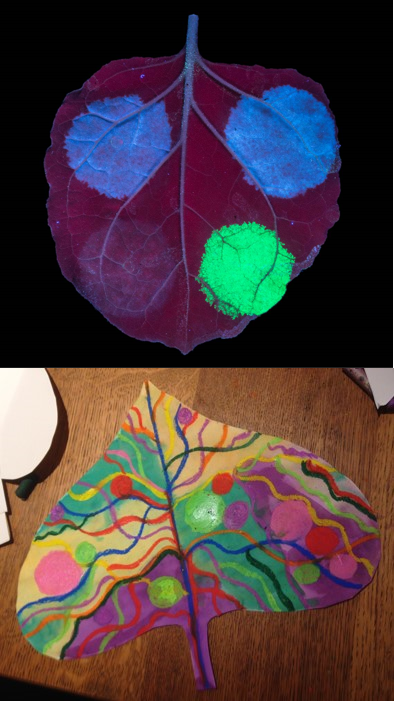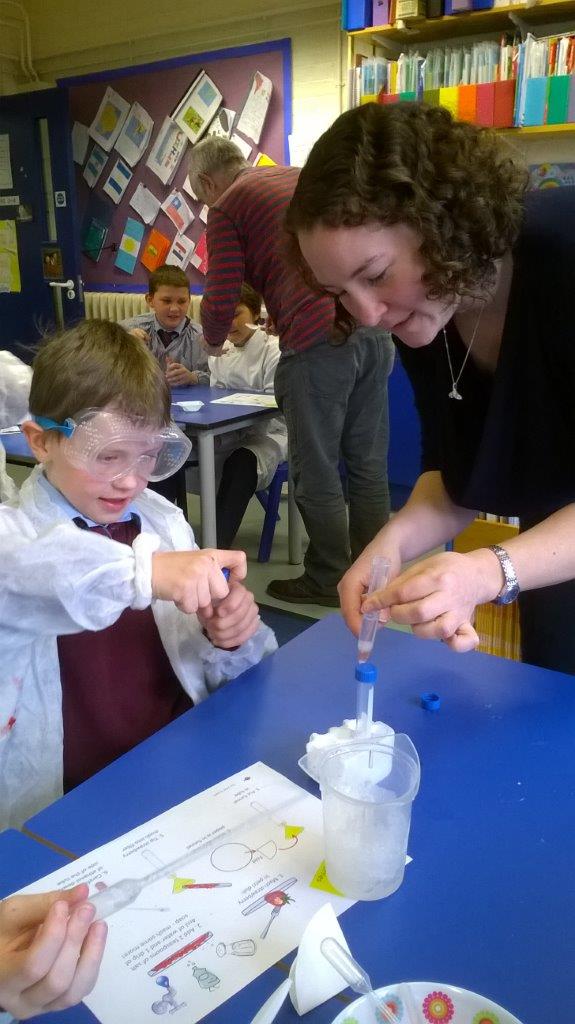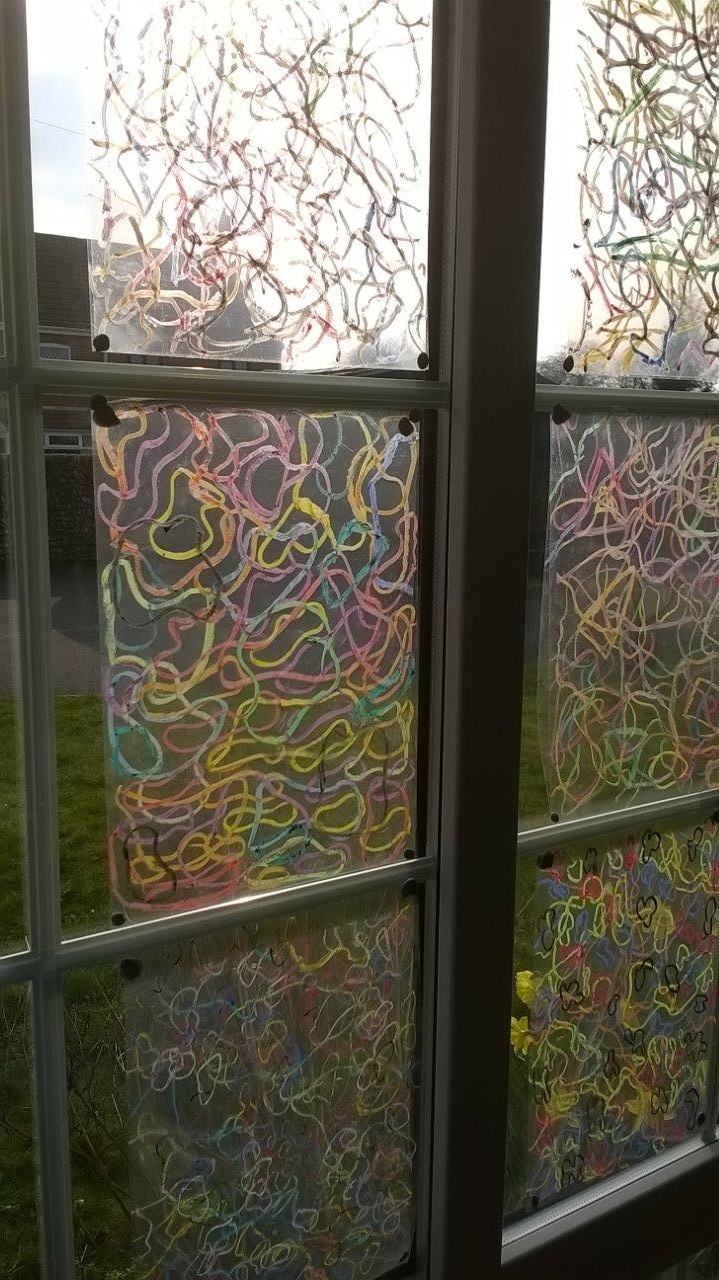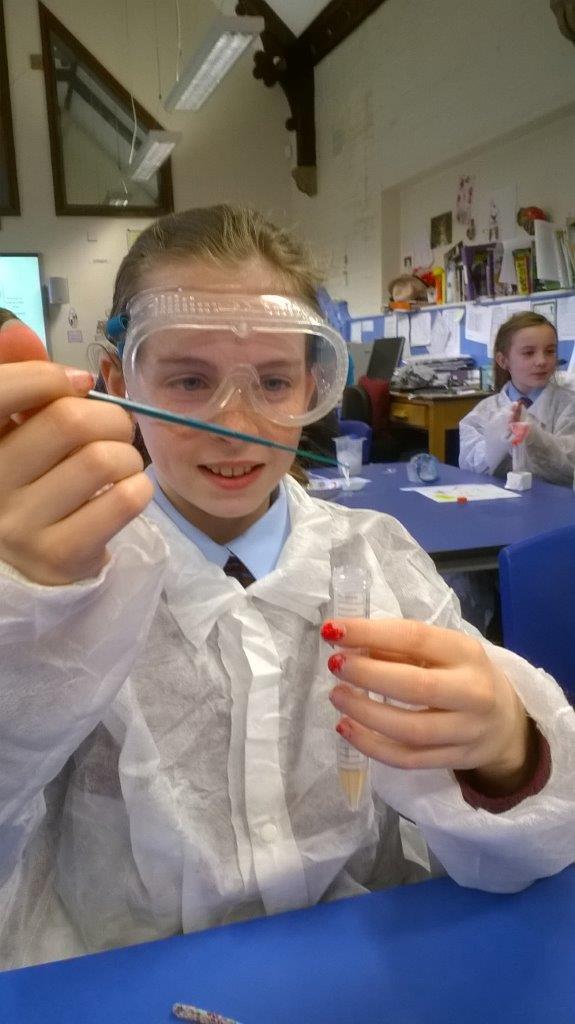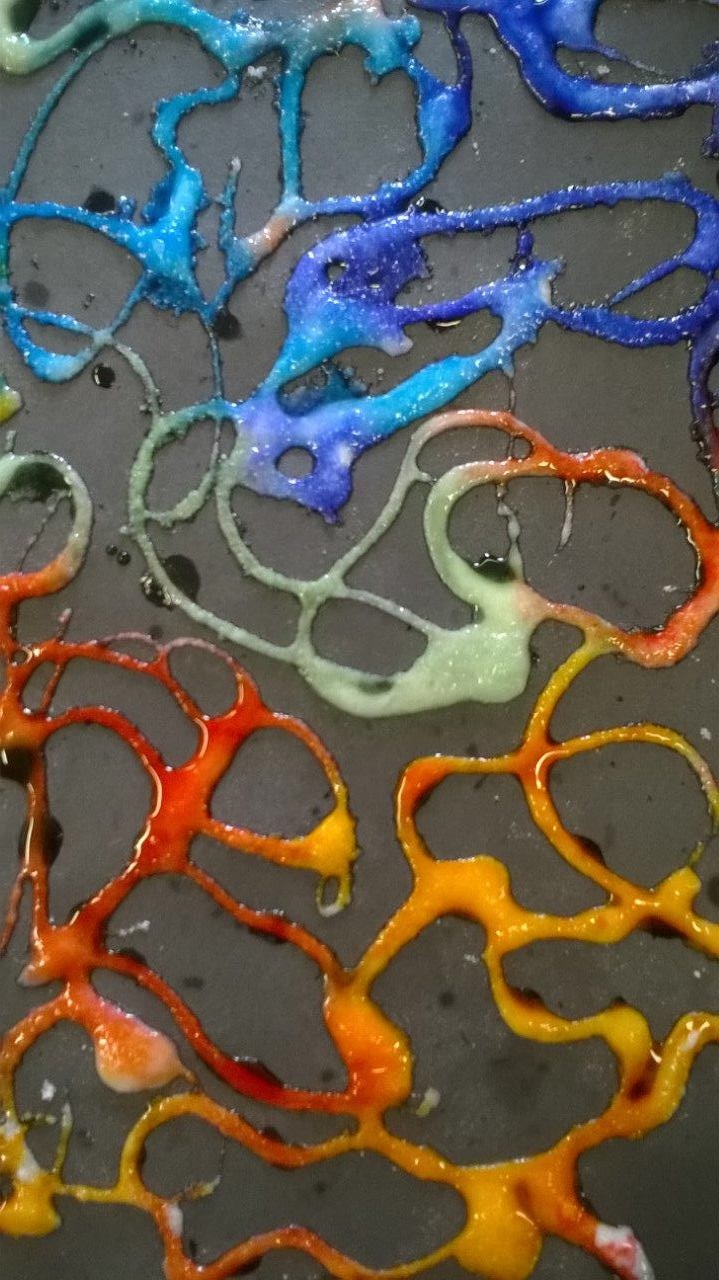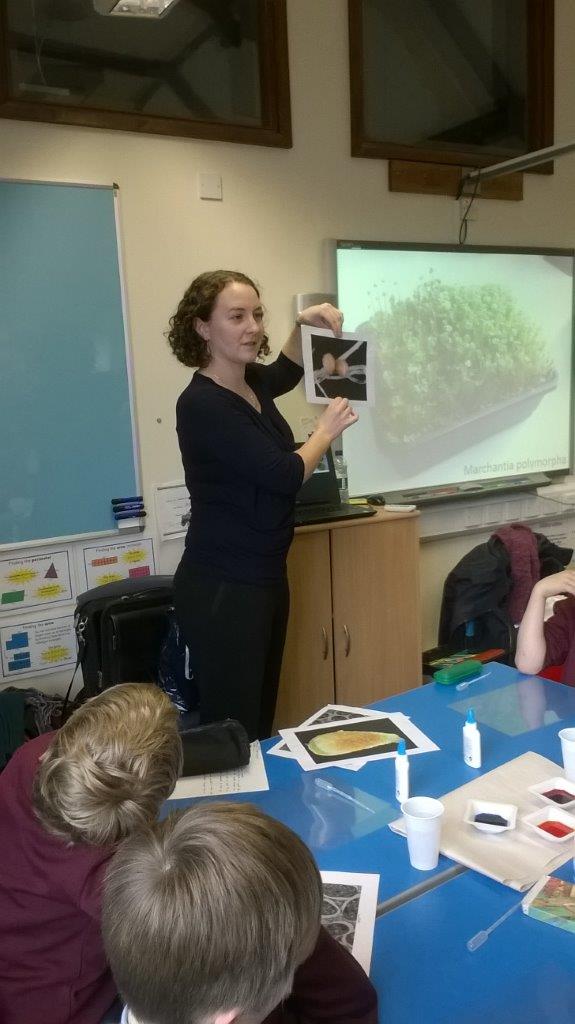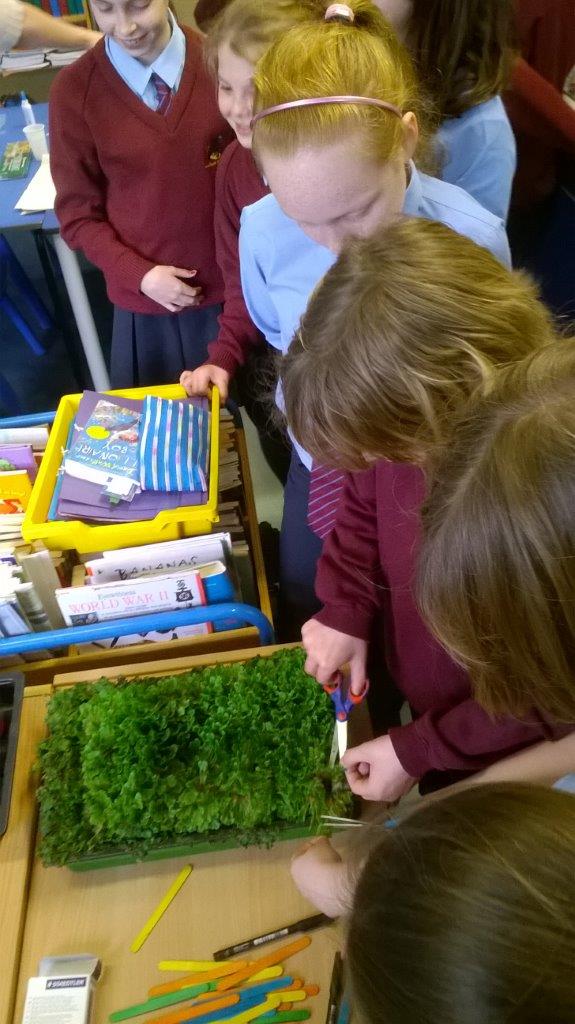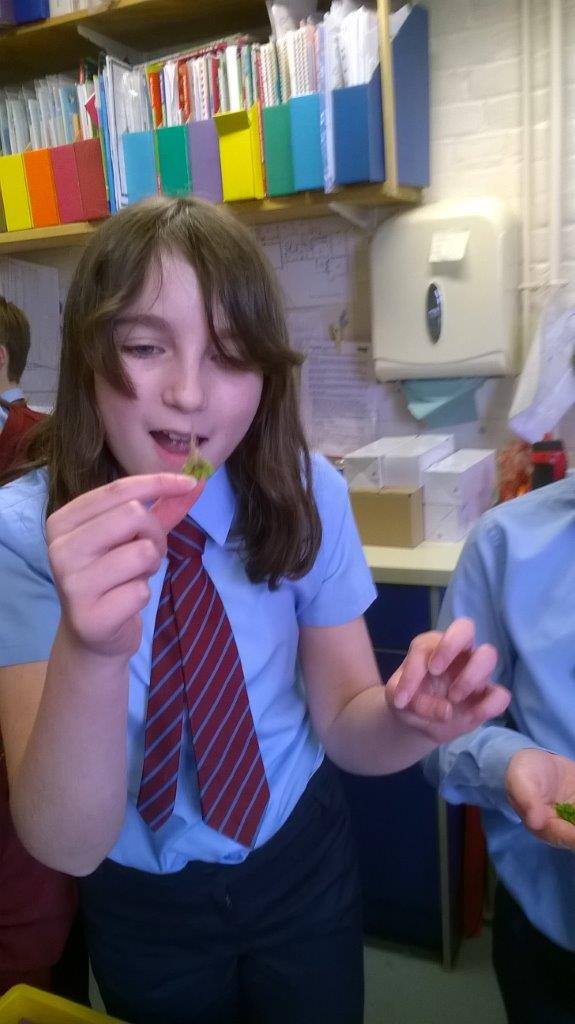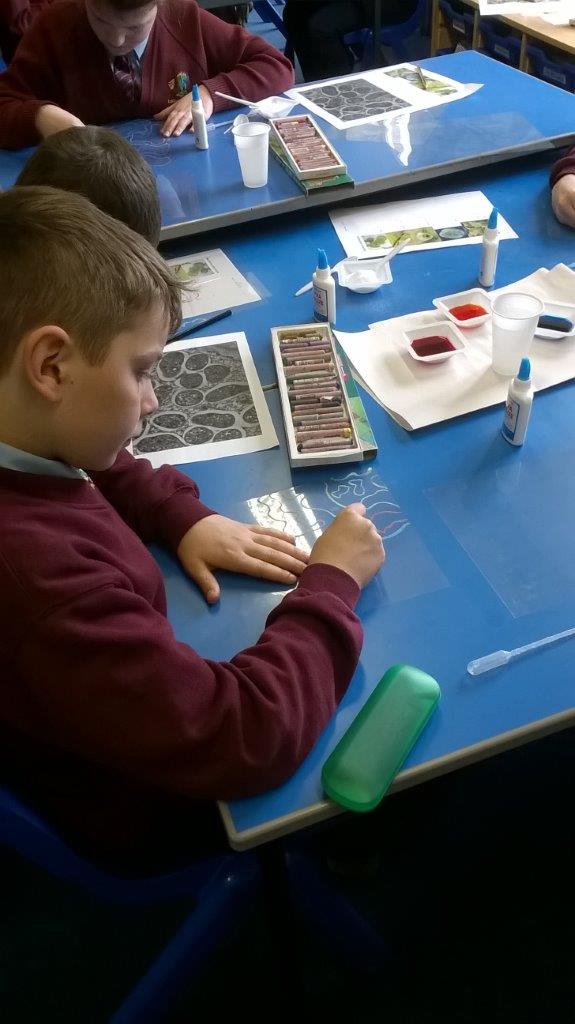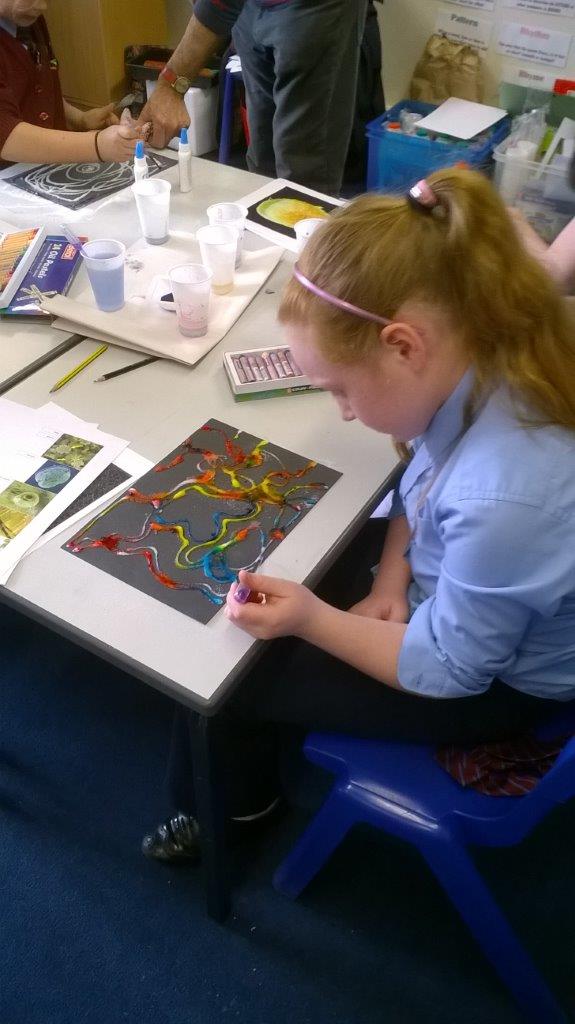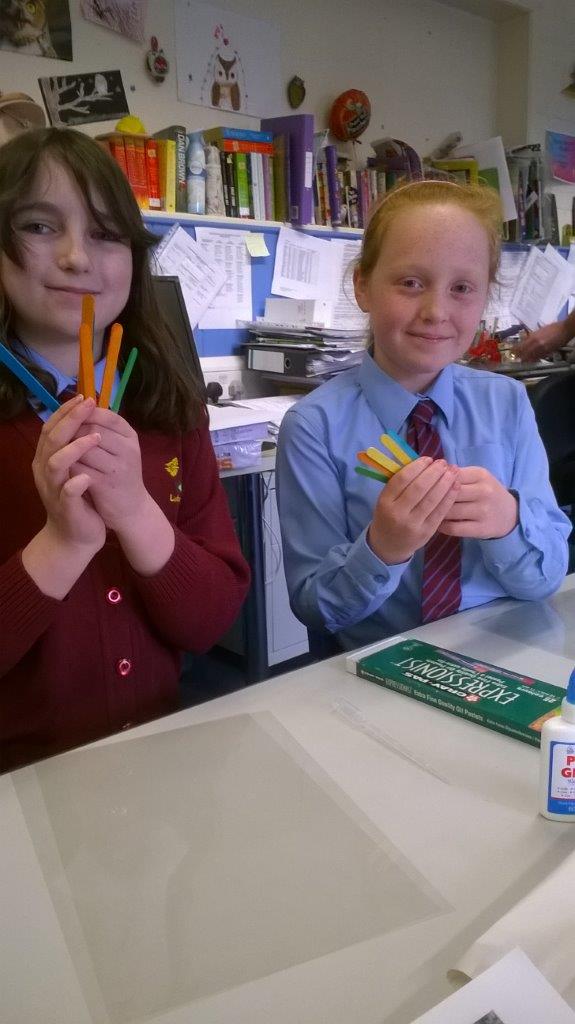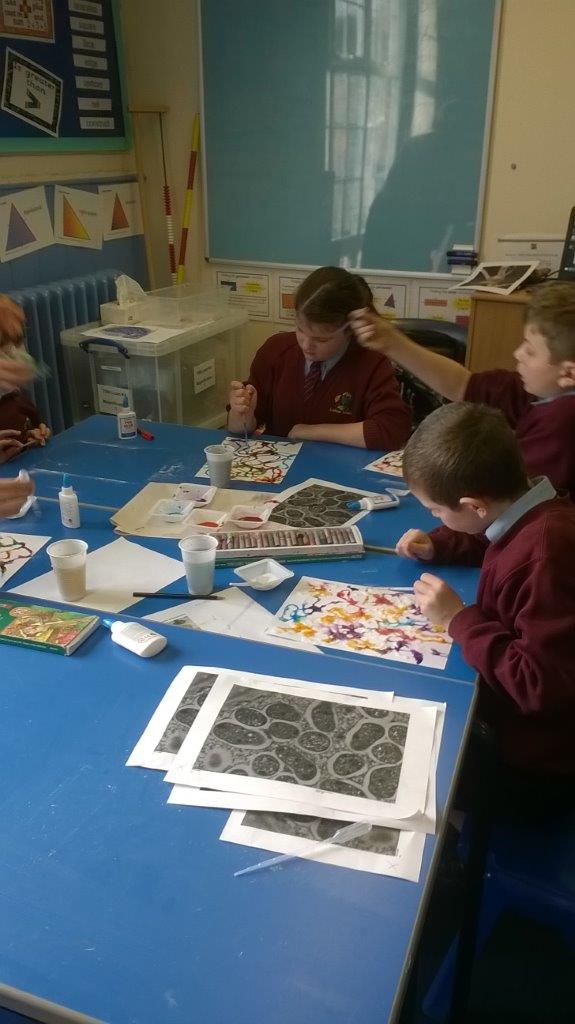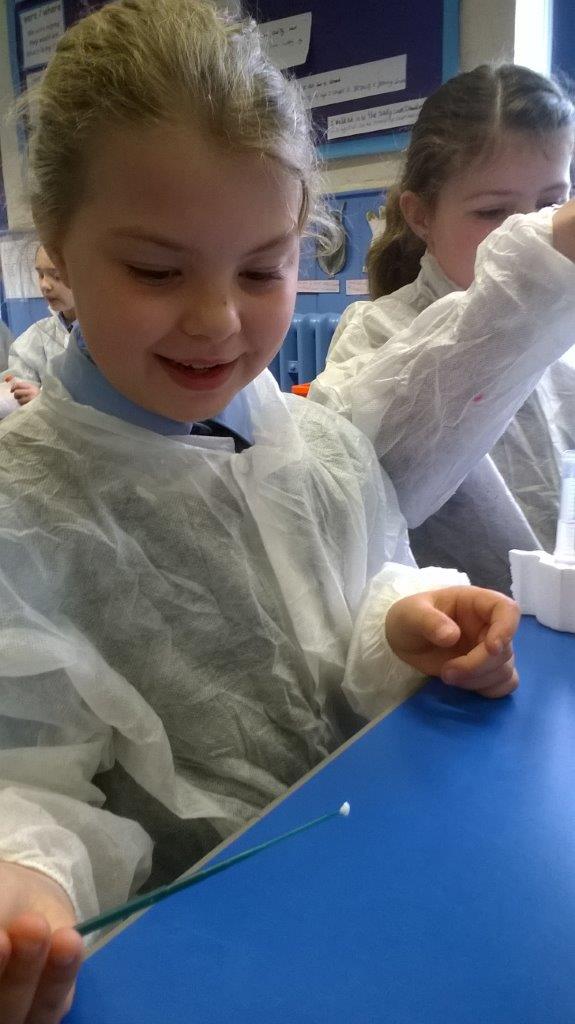Above: Nicotiana benthamiana by Aymeric Leveau (JIC), image NRP-103: licenced under CC-BY 4.0.
Below: Artwork created by a scientists, inspired by above image of Nicotiana benthamiana
As part of a workshop for post docs on ethics, the media, openness and outreach the participants were treated to an after-dinner Science Art and Writing session at St Andrews Brewhouse in Norwich. The session began with a discussion about communicating with the public and then focused in on specialised communication, something scientists do very well! Writer Mike O’Driscoll then introduced the group to other styles of communication and encouraged them to write poetry to explore new ways of getting messages across.
Artist Chris Hann then led an art activity on the theme of plants to encourage creative interpretation and sharing of science. This activity not only introduced new ways of approaching outreach but also gave the scientists time to reflect on the key messages and aims of their work and how they might express that and also sitting around the table exercising their artistic sides led to a vibrant level of creative exchange which was very refreshing.

![[Closes 24 Nov 2107] Apply now to the OpenPlant Fund!](https://images.squarespace-cdn.com/content/v1/54a6bdb7e4b08424e69c93a1/1509564315902-TUO4I6QRWI9TT8UGSIAJ/OpenPlantTwitter_400x400+%281%29.jpg)

![[Closes 7 Mar 2017] OpenPlant Research Associate (Haseloff Lab)](https://images.squarespace-cdn.com/content/v1/54a6bdb7e4b08424e69c93a1/1486552818859-FH76MCA8SMFU93WB85RX/OpenPlantTwitter_400x400.jpg)
